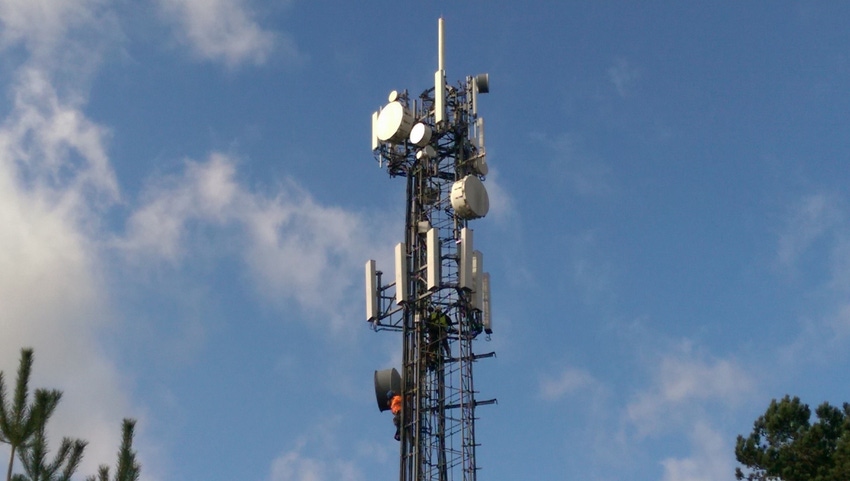While there are many factors involved on the path to expanding rural broadband access, talent is an essential component to moving projects forward.
September 14, 2017

Telecoms.com periodically invites expert third parties to share their views on the industry’s most pressing issues. In this piece Malik Zakaria, founder and CEO of Field Engineer argues that we need to change the approach to telecoms engineers if to achieve future goals.
Recent reports by the Federal Communications Commission (FCC) show that about 10 percent of the U.S. population lacks access to internet. That may not sound like a large number, but taking a look outside of the coasts, 39 percent of the U.S. rural population lack access to 25 Mbps down /3 Mbps up service.
Despite U.S. government subsidies via programs like FCC’s Connect America Fund, progress of rural broadband initiatives is slow. The FCC stated in its most recent report that “broadband is not being deployed to all Americans in a reasonable and timely fashion.” This statement could be revised to replace “Americans” with any other country.
Historically, the consensus has been that the biggest barrier to fixing this problem is a capital one – that building the infrastructure simply can’t be done in an economically feasible way. A study by Informa showed that 52 percent of operators said that the cost of building backhaul is the greatest challenge to providing rural connectivity. This logic has continued to play out in the news as the Trump Administration talks about its large infrastructure plan in the U.S., and globally as the likes of Colt, Microsoft and British Telecom have made public commitments to tackling rural broadband access.
But broadband is just like any other infrastructure – it needs to be operated to be usable, and that means there is long-term labor demand at hand for which must be accounted and planned. As a former network engineer, I know that workforce alignment and preparation is oftentimes the part of a project that gets overlooked.
This is the great irony of the issue – we need to develop a skilled workforce to address what is arguably the greatest economic opportunity that many countries have on the table right now. For the U.S. alone, an Information Age Economics report estimated that a 2.2 percent increase in GDP would result directly from the development of mobile broadband – by 2017. Given that this bump hasn’t happened, we are clearly behind. So, it’s time we take some action focused on the workforce, starting with these two steps:
1. Rethink the labor model
Most engineer jobs today are completed using external contractors. The contractors bid on very specific projects, but the work in broadband deployment and maintenance is very fluid across locations and skills. This means that oftentimes new bids have to be issued when those changes happen, causing delays.
Instead, we should focus on labor as beholden to the individual and not the contractor. When we do that, similar to the on-demand service models of Lyft and TaskRabbit, we can better take advantage of available capacity in the workforce. Take for example, a national retail chain looking to implement Wi-Fi across their restaurants. With no field engineers on the ground in remote locations around the U.S. with the right skillset to complete the work, the retailer leveraged the on-demand engineer model to ensure that local, freelance field engineers could be deployed to specific sites and complete the job. This particular project is typically slated for months and was completed in just weeks using this approach.
This model works in part because of the untapped field engineer workforce. With the recent struggles of the telecommunications industry, less people have had full-time employment as carriers have laid-off employees to manage declining revenues – the U.S. Department of Labor reports a 200,000-employee decline between 2006 and 2016.
2. Reskill the workforce
In addition to better using the field engineers who are available and ready to work, we need more skilled engineers, and fast. With the insatiable demand for data and the development of 5G, we are headed toward a skilled workforce shortage.
Currently wireless infrastructure communications skills can be learned in undergraduate programs or in the field by carriers, OEMs and industry advocacy groups. But, evidence shows that the skills available don’t match the jobs in demand. According to data from the Field Engineer platform, 34 percent of communications jobs available can’t be filled immediately because an engineer with the matching skills is not available. At the time of publishing this article, the top types of trained engineers in demand are network engineers, wireless engineers, security engineers, datacenter and field engineers in wired and radio frequency wireless networks.
While there are many factors involved on the path to expanding rural broadband access, talent is an essential component to moving projects forward. Without the right people on the ground to complete projects, the work simply cannot be done. As an industry, we have a responsibility to consider alternative models, such as on-demand labor, as we work with communities and public sector stakeholders to close this access gap. Let’s work together to close the gap – it’s not just good for the residents and businesses in our rural communities; it’s good for all of us.
Read more about:
DiscussionAbout the Author(s)
You May Also Like








.png?width=300&auto=webp&quality=80&disable=upscale)


_1.jpg?width=300&auto=webp&quality=80&disable=upscale)


.png?width=800&auto=webp&quality=80&disable=upscale)